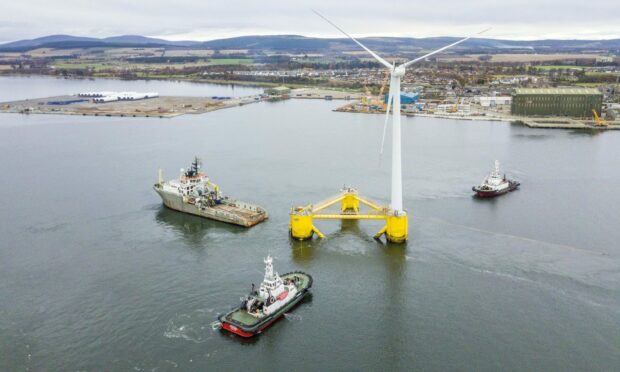Scotland is preparing for Covid-19’s “next normal”.
The country is focusing on the green recovery of the economy and getting ready to host the COP26 UN climate summit. It has never been more vital for the University of the Highlands and Islands and industry to work together to create sustained and sustainable economic growth in our region.
That is why it was so important that the university became part of the Opportunity Cromarty Firth consortium.
Led by the Port of Cromarty Firth, the consortium also includes renewable energy global brands, Inverness Harbour Trust, Highlands and Islands Transport Partnership, the Highland Council and Skills Development Scotland. But Opportunity Cromarty Firth is no talking shop: as the university’s representative on the steering group, I have been seriously impressed by the project’s pace and ambition.
A major opportunity for the regional economy is the ScotWind leasing round to establish 10 gigawatts of offshore wind capacity, requiring around 700 offshore wind turbines over several decades – most of which will be on the “doorstep”.
Greenports will require new skills and create new jobs
To help secure manufacturing, operation and maintenance business on this scale, Opportunity Cromarty Firth intends that the Cromarty Firth will become a “free trade zone”. Free trade zones are part of the UK Government’s post-Brexit growth strategy.
English freeports were announced in March, and “greenports” will be the Scottish equivalent. A Cromarty Firth greenport would stimulate economic activity and employment, attract inward investment in the renewable energy technologies of the future and equip local people and businesses with the corresponding skills to bring unprecedented transformational regeneration to the Highlands.
The scale of the ScotWind opportunity demands the latest in advanced and serial manufacturing technology, creating significant local career opportunities across the supply chain. The academic sector has a pivotal role to play in this.
Evolution of jobs will contribute towards improving gender balance
Participation in Opportunity Cromarty Firth provides the university with invaluable insights on local jobs and skills trends and their effects on the green recovery. Skills Development Scotland states in its climate emergency skills action plan that completely new job types will be needed, other job types will need to be modified and certain existing job types – like offshore wind technicians – will grow significantly in volume.
In 2018, just 12% of those working in engineering were female. Scotland’s offshore wind industry is targeting a minimum of 30% (and ideally 40%) by 2030
As this initiative develops, the university team uses the knowledge gained to update courses and apprenticeships, ensuring that the skills and training underpin the transformational, positive impact that we constantly aspire to.
This evolution of job opportunities will also contribute towards improving gender balance in science, technology, engineering and maths careers. In 2018, just 12% of those working in engineering were female. Scotland’s offshore wind industry is targeting a minimum of 30% (and ideally 40%) by 2030.
Green hydrogen will be a game changer for the Highlands
Offshore wind on this scale provides another green energy opportunity: the manufacture of “green” hydrogen powered by the clean energy of offshore wind. Green hydrogen will be an important energy resource for the Highlands, with uses ranging from trains and aviation to domestic and industrial heating.

Port of Cromarty Firth leads the North of Scotland Hydrogen Programme, developing a state of the art hub to produce, store and distribute hydrogen to the region and further afield. A distilleries feasibility project is already underway with ScottishPower, Pale Blue Dot Energy, Glenmorangie, Whyte & Mackay and Diageo.
The range and size of these technology developments provides the perfect opportunity to establish major links across applied research communities, and this led to the development of the PowerHouse project.
The future is green
The PowerHouse aspires to be a leading global centre for collaborative applied research and development focused on advanced manufacturing, floating offshore wind and green hydrogen. It will also be a specialist educational hub for schools, students and workers interested in these renewable energy sectors.
Opportunity Cromarty Firth is a refreshingly focused and energetic consortium and its greenport ambition is precisely the mindset needed to contribute to a rapid and sustained green recovery.
Giles Huby is Director of Engineering and Built Environment, North Highland College, at the University of the Highlands and Islands

